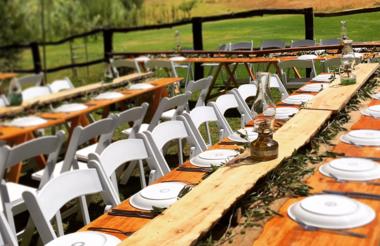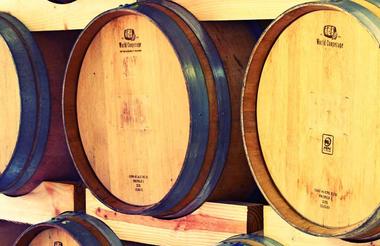One of the most culturally and geographically diverse places on earth, South Africa, fondly known by locals as the 'Rainbow Nation', boasts 11 official languages, and its inhabitants are influenced by a fascinating mix of cultures. Discover the gourmet restaurants, impressive art scene, vibrant nightlife, and beautiful beaches of Cape Town. Enjoy a local braai (barbecue) in the Soweto township, browse the bustling Indian markets in Durban, or sample some of the world's finest wines at the myriad wine estates dotting the Cape Winelands. Some historical attractions to explore include the Zululand battlefields of KwaZulu-Natal, the Apartheid Museum in Johannesburg, and Robben Island, just off the coast of Cape Town. Above all else, its untamed wilderness is astonishing: wildlife roams freely across massive unfenced game reserves such as the world-famous Kruger National Park.
The Breede River Valley is relatively broad and flat for a Western Cape valley, averaging at a floor height of 80m-250m above sea-level. Western regions are mostly alluvial and flat, while eastern regions have more hills of the Bokkeveld Formation with narrow alluvial deposits. The valley was formed by its namesake, the Breede River. It is completely encircled by high mountains of the Cape Fold Belt ranging in height from 1500m to upwards of 2000m's. It stretches from Tulbagh in the north to McGregor in the south and Rawsonville in the west to Ashton and Bonnievale in the east.
The largest town in the valley is Worcester, which lies almost in the centre of the valley, virtually equidistant from Tulbagh in the north and the other major town, Robertson to the south-east. The main north-south rail and road routes traverse the valley, including the N1 highway linking Cape Town and Johannesburg.
It is climatically diverse, however it completely falls within a Mediterranean Climate with most precipitation falling in winter (May through September). Towards the north and west, rainfall approaches upwards of 1000mm p.a., particularly in the Slanghoek Region near Rawsonville, whilst it becomes drier towards the south and west, with most areas averaging 300mm p.a., with areas near Worcester only receiving 175mm p.a. Thus Karoo Shrub dominates eastern hills (particularly the unique Robertson Karoo vegetation type) with lush Fynbos vegetation dominating western regions.
Summers can be very hot, due to its inland location, usually averaging 30ºC from December to March, but sometimes peaking near 40ºC during the hottest of days. This is due to the Du Toitskloof and Riviersonderend Mountains blocking cooling oceanic breezes from reaching the valley. During winter however, the valley is often colder than other seaward regions, like the Overberg. Snow is a regular occurrence on the surrounding mountains; snow does not fall on the valley floor, although light frost does occasionally occur. Spring and Autumn are transitional periods of variable rainfall, occasional light snow on the highest peaks and mild temperatures.






